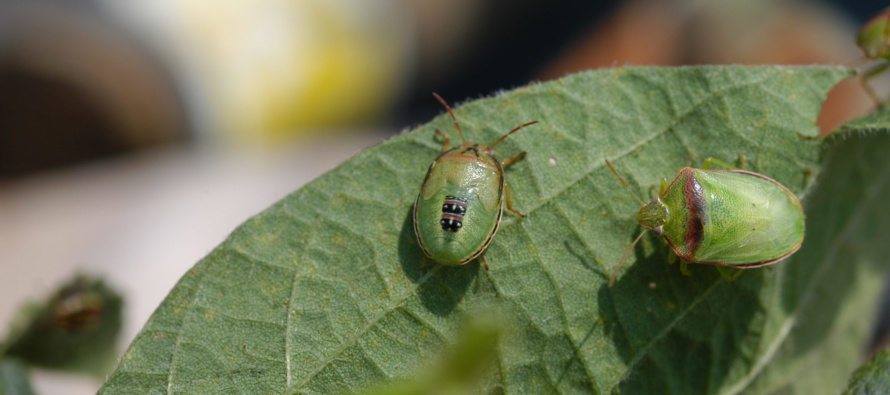What Will Cold Temperatures Mean for Redbanded Stink Bug This Year?

Related Articles
- 2010 Soybean And Corn Variety Trial Data 3
- Mississippi Cotton Insect Situation of 2010: A Look Back 3
- Rice Insecticidal Seed Treatment Recommendations for Mississippi in 2011 0
Latest Tweets
Entomologist across the Mid-South have had numerous questions about how below average temperatures we have encountered this month will impact RBSB populations this year. What we know is RBSB’s are tropical insects that do not survive well in cold temperatures. We have certainly had very cold temperatures this month that have been sustained for days at a time in some cases. According to research conducted by Dr. Jeff Davis at LSU, It takes 4 hours of temperatures at 23F to kill 50% of the population. If you sustain temperatures at 23F for 7 hours you will kill 90%. At 32F it takes a week of sustained temperatures to kill 95% of the populations. We have certainly dropped below these temperatures for extended periods of time all the way to the coast. However, keep in mind that ambient air temperature is not always a indicator of temperature where the insects are hiding. We took advantage of the New Years cold snap and the more recent one this week to get some data loggers out in protected places that RBSB may likely be hiding trying to survive the winter. Below are the results (As a reference, the morning of Jan 18, it was 7F at 6 a.m.). The red box on the slides represent 32F and below. It does appear that most habit did in fact get very cold for a sustained period of time. However, we did identify 2 habitats that never got below freezing. Both were in low hardwood type areas about 1-2″ below the leaf litter. So what does all this mean? I think without question if what we “think we know” about this insects ability to survive cold weather is true, we will see a huge reduction in populations this year. However, there will potentially be some habitat that they could survive in if they were lucky enough to choose those spots for hiding out the winter.
I look at this data as interesting to talk and speculate about but the real answer to if they survived will happen about March when we start sampling ditch banks around the state. This will tell us with certainty how far they survived north in the state of Mississippi. Other states will be doing the same. We will post that information here as well.











Great post and data. Very useful indeed.
This weather should have knocked the RBSB way back. But you are right to watch overwintering areas, especially legume weeds, cover crops, and habitat management areas planted with legumes.
In southern Louisiana, our toughest years are after a mild winter. Dealing with this pest since 2001, we all could use a break.
Awesome findings
Awesome findings
Well they’re still alive all along the Lake Erie Coast in Ohio at the PA Ohio border I live in Ashtabula in there doing their utmost coming indoors to survive the winner we had a large infestation of them this past year much more than last year and it’s hard to kill them. Most foggers and size of those types are useless you must have an exterminator literally come in and take care of the job